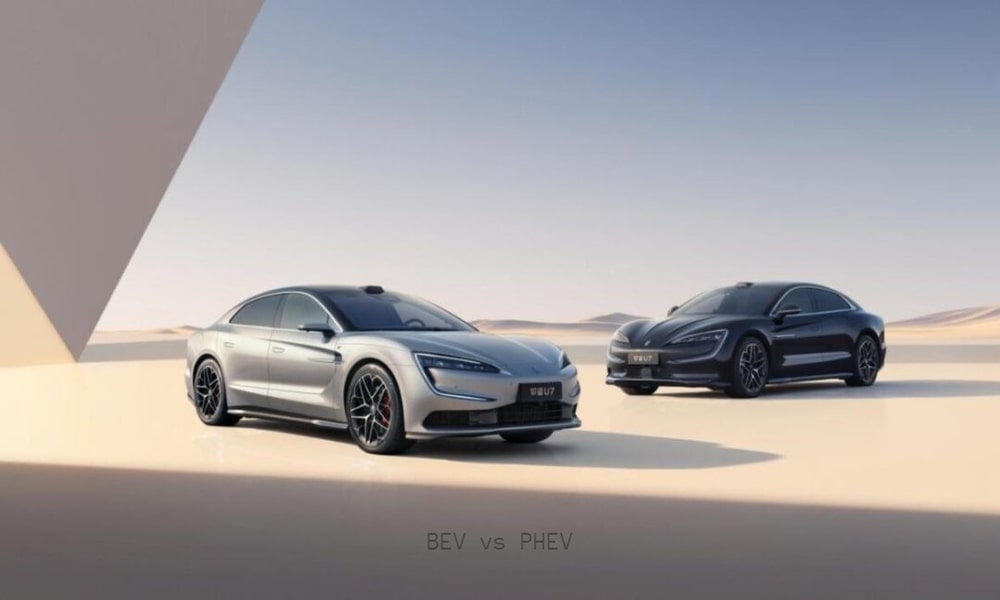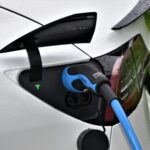Introduction
The number of electric cars is increasing rapidly. They are better-organized and environmentally-friendly. For you to make an informed purchase decision, be aware of the differentiators. If you’re exploring options and wondering which is better for your needs, understanding the differences between BEV vs PHEV is crucial. Here is the list of pros and contras for BEVs.
What is a PHEV?
Plug-in Hybrids Electric Vehicles are hybrids that have internal engine combustion (ICE), as nicely an electric powered one, with rechargeable cells. When evaluating BEV vs PHEV, it’s critical to note that a PHEV is capable of going for walks on electric strength for brief journeys however switches to fuel for longer trips, supplying a combination of each worlds. Plug-in Hybrid Electric Vehicles PHEVs can recharge the battery via a wall plug.
What PHEVs are and how they operate?
PHEVs are powered with a giant battery. A charge point can be used to recharge the battery from an external source. A gasoline engine will mechanically kick in when the battery gets low. It gives you more range. Flexible vehicles, PHEVs can easily switch between using electricity or gasoline. For people who like to commute for short distances while preferring the comfort and convenience of gasoline during longer journeys, they offer the best in both worlds.
Popular models for PHEVs
- Toyota Prius Prime: It is one of the best-known names in hybrid vehicles, and it offers an impressive amount of range.
- Mitsubishi Outlander: The compact SUV that combines hybrid technology, practicality, and style.
- BMW 335e: Luxury plug-in Hybrid that has a range of only electric.
What is a BEV?
Battery Electric Vehicles run using the battery power stored within their enormous batteries. Battery Electric Vehicles (BEVs) do not use gas that they’ve inner combustion engines. When evaluating BEV vs PHEV, the important thing difference lies within the powertrain. BEVs depend totally on power, whilst PHEVs rely on a combination of power and gasoline. BEVs are cleanest vehicles in terms of emissions as they completely depend on electrical strength.
How electric vehicles work?
All BEVs use batteries as their sole power source. Batteries are charged externally by home chargers, charging stations, or high-speed wireless network. The BEVs have zero tailpipe emissions because they do not produce pollution. BEVs may have different driving distances depending on the size and type of batteries, yet they were designed for owners who charge frequently.
Popular BEV models
- Tesla Model 3: This model has a stylish design, impressive tech and a long range.
- Nissan Leaf: Electric car more accessible with many useful features.
- Chevrolet Bolt: Electric vehicle that is compact and ideal for driving around the city.
Key characteristics of BEVs and PHEVs
- Powertrain, A motor with an electric battery. BEVs only run on electricity. In BEVs, there’s no gas and minimal noise.
- Both the internal combustion and electric engines of PHEVs are combined into one vehicle.
Calculate your battery charging time
- BEVs typically have larger battery packs that allow for longer ranges per charge compared to PHEVs. The charging times for BEVs are typically much higher. This can range from an hour all the way up to over half a working day, depending how you choose to charge.
- features smaller batteries when compared with BEVs. In turn, this allows them to charge faster. It can even take only 2 or 4 hours. They do have a lower electric range. Usually, it is between 20-50 miles.
Emission levels
- Electric cars do not emit any tailpipe pollutants, and are therefore the cleanest vehicles on the present market.
- However, if they are powered by gasoline, PHEVs will emit the same amount of CO2. When operating in electric mode, however, PHEVs emit zero emissions.
Key differences between BEVs and PHEVs
Fuel dependency
- BEVs Completely electric. They don’t require fossil fuels, gasoline or diesel. The BEV user needs to charge their vehicles at home, or use public chargers.
- PHEVs can be classified as either electric or gasoline powered vehicles. PHEVs are vehicles that use both gasoline and an electric engine to provide power. They allow the driver to easily switch fuel types. The reason for this is that they do not solely rely on electricity.
Calculation of driving distance
- Electric vehicles have an increased range. Models such as the Tesla Model 3 are capable of going over 350 miles per charge.
- PHEVS PHEVS driving distances for electric vehicles are smaller. The range is usually only between 20-50 miles. A gasoline engine gives you a longer driving distance, sometimes up to 400 miles.
- BEVs are easier to service because they have fewer components. No oil change is required, components last longer and require less maintenance.
- The Plug-in Electric Vehicle has both an engine with a petrol and a motor that is powered by electricity. This means they need regular maintenance of both. The maintenance includes oil changes and servicing of the electric motors and batteries.
Batteries recharging on a BEV and PHEV
Charging infrastructure
- EVs rely on an infrastructure of charging that’s reliable for them to function in the daily world. There are many public charging outlets and options to charge the vehicle at home.
- PHEVs have a greater adaptability in terms of charging. These vehicles are able to run on electricity during short journeys and switch over to gas for longer trips. Since they are more versatile in terms of their charging method, these vehicles can drive on gasoline or electricity while traveling long distances. As a result, these vehicles do not depend as heavily on charging infrastructure.
Charging rates
- It’s cheaper to charge your BEV than it is to fill up with gas. Costs of electricity can vary, but generally, charging an electric vehicle is much cheaper than buying fuel.
- Although PHEVs offer charging as an option, gasoline-powered PHEVs cost more.
Area affect
- When your BEV runs low on battery, you may feel anxious. This could happen during long journeys, or if there aren’t many charging stations. Fast-charging stations, now in greater numbers, help to ease this worry.
- On longer trips they do not have to worry because gasoline can be used.
Benefits of a BEV and PHEV
Environmental Impact
- The Battery Electric Vehicles produce no carbon dioxide and, therefore, are an excellent choice for people who wish to minimize their carbon impact.
- This vehicle emits significantly less pollution than conventional gasoline cars. They emit some pollutants when running on gas but they’re much less harmful than an old-fashioned vehicle.
Cost efficiency
- The cost to own and operate BEVs is higher initially but it becomes cheaper with time. On the whole, BEVs can be more cost-effective.
- PHEVs provide cost-savings by running on electric power, while also providing convenience and flexibility through gasoline engines.
Drive experience
- BEVs are famous for their powerful, comfortable and quiet driving. BEVs, which have no sound from the engine and offer instantaneous acceleration and quieter driving thanks to their absence of noise.
- PHEVs deliver a more traditional driving experience. They also offer only electric operation for short commutes.
Choosing the right vehicle for your needs
Driving in rural vs urban areas
- Urban driving: Due to their quiet operation, zero emissions and clean power source, BEVs flourish in urban environments. The short travel distance makes BEVs ideal for the commuter. It is also a good option for locations that have many charging stations.
- Road Driving: The PHEV could be the best option for motorists in rural areas without easy access to charging stations. The hybrid vehicles can either be powered with gasoline or by electricity.
Budget considerations
BEVs can be expensive initially due to high upfront costs. They are still affordable because of government incentives, as well lower running costs.
PHEVs tend to be cheaper at first. Over time fuel prices have continued to rise.
Long-Term ownership costs
Electric vehicles are typically less expensive because of the lower maintenance costs and reduced fuel consumption.
PHEVs will require regular maintenance, which includes the gasoline and electrical systems. This may lead to increased service fees in the future.
Conclusion
Take into account your driving preferences, concerns about the environment and finances when choosing between BEVs and PHEVs. BEVs offer a terrific option for drivers who care about the environment and have reliable infrastructure. For those looking for a hybrid choice, the PHEV offers a versatile solution that combines both gasoline and electricity. Electric cars and gas-powered vehicles both can contribute to creating a sustainable tomorrow.
FAQ’s
Is PHEV electric or hybrid?
It has both an electric and gasoline powered motor. This car can travel short distances with only its electric motor.
Is Tesla PHEV or BEV?
Tesla is the only manufacturer of battery-electric vehicles. Tesla cars do not use gas engines.
Which is better, PHEV or BEV?
The kind of vehicle you choose will depend on the supplies. BEVs are enhanced for short commutes and environmentally-conscious drivers, while PHEVs present more flexibility for longer trips.
Are plug-in hybrid vehicles solely powered by electric motors?
If the PHEV is only used for short distances, you can run it entirely on electricity. However, once the battery runs out of range, they switch automatically to petrol.




